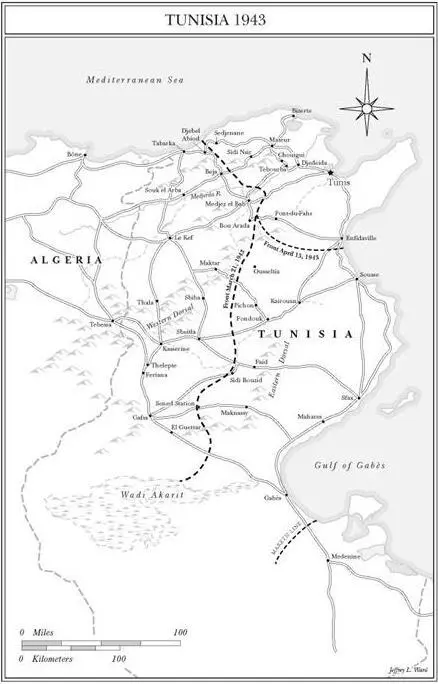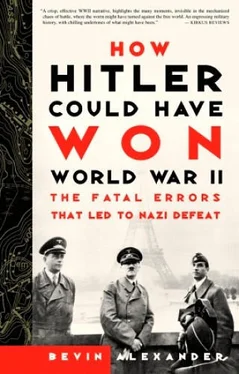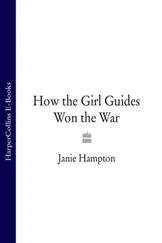Actually, strategic bombing did not have a decisive effect on the war. German production was not crippled. Though German morale declined, the bombs did not bring about a demand for surrender. In sum, Germany was devastated by the bombing, but the war was decided by the Allied armies, not the air forces.
The Allies were also concerned about German U-boat attacks on Atlantic convoys, and they intensified efforts to defeat the submarine menace.
Three other events took place at Casablanca with wide implications for the future. On December 2, 1942, scientists at the University of Chicago induced a nuclear chain reaction, which proved that the atomic bomb was possible. The Allies decided at Casablanca to go all out to produce the bomb.
On the final day of the conference, January 24, 1943, Roosevelt announced that the Allies would demand unconditional surrender from the Axis powers. Although there was much argument later that this lengthened the war by strengthening the enemies’ will to resist, there is no evidence this was true. Unconditional surrender was an assurance to Stalin that he would not be left alone to fight the Germans.
Finally, the Allies agreed to invade Sicily. This would lead to an assault on Italy. There was going to be a Mediterranean strategy, after all.
17 KASSERINE AND THE END IN AFRICA

THE BATTLE OF KASSERINE PASS OCCUPIES A SPECIAL PLACE IN THE MYTHOLOGY of American wars. It was the most staggering and unequivocal defeat in American history, with the exception of the Union debacle at Chancellorsville in the Civil War. But at Chancellorsville Americans were fighting themselves. Analysts of that battle focused on the incompetence of Union General Joe Hooker compared to the brilliance of Confederate Generals Robert E. Lee and Stonewall Jackson. They didn’t raise questions about the quality of the American fighting man. After Kasserine, however, a crisis of confidence shook the Allied military. American morale plummeted, and doubts arose about the quality of American soldiers, especially among the British.
Actually the failure at Kasserine could be traced, as at Chancellorsville, to the quality of leadership they received. Leadership explains the differences in the performance of nearly all armies at all times. At Kasserine a Hooker-level incompetent named Lloyd R. Fredendall had the misfortune to come up against Erwin Rommel, the one true military genius to emerge in World War II.
Chancellorsville and Kasserine demonstrate that the outcome of battles depends upon leadership. But laying full responsibility on the commander is difficult for human beings to accept. Most people assume that groups arrive at decisions by the interaction of their members. This leads many to attribute a defeat (or victory) to the alleged inherent nature of the soldiers or their nation, not the leaders.
After Kasserine British officers and men condemned Americans as “our Italians,” implying Americans were inferior soldiers, as they felt the Italians were. The Italians did perform poorly, but the British forgot that the failures were not due to the soldiers but to their leaders, who sent Italian armies into battle with grossly inferior equipment and under incredibly poor commanders. In the few cases where Italians had good leadership they performed well, sometimes in spite of their atrocious weapons.
Kasserine taught a lesson all wars teach: a military organization must make life-and-death choices. It does not arrive at these choices by consensus. Seeking consensus leads first to debate, then to disintegration, since some will accept hard choices, while others will not. Military forces work only when decisions are made by commanders. If commanders are wrong, the units will likely fail. If they are right, they may succeed.
Kasserine taught another lesson: envious or blind officers on one’s own side can nullify the insight of a great general and prevent him from achieving a decisive victory.
When Erwin Rommel pulled his beaten panzer army into Tunisia in late January 1943, he spotted an opportunity to transform the military situation in North Africa by a single, great stroke. If it succeeded, it could throw the Allies on the defensive and possibly lead to stalemate.
Montgomery was moving toward the Mareth line with his usual agonizing slowness. His army could be ignored for a couple weeks. The Allies in Tunisia had been stopped by the rains of Mediterranean winter and were arrayed on a north-south line with the British in the north, the newly organized French 19th Corps in the center, and the U.S. 2nd Corps under Fredendall in the south.
Rommel, in the Mareth line, recognized he had landed in Napoleon’s “central position” between two enemy armies, and could strike out and defeat one before having to turn back and confront the other.
Rommel saw something else: the Americans and the French were advanced far eastward into central Tunisia holding the Eastern Dorsal passes at Fondouk, Faid, and Gafsa, and shielding the passes in the Western Dorsal Mountains sixty to seventy miles to the west.
If Axis forces could seize Faid and Gafsa, and drive on to the Western Dorsal passes beyond Feriana and Kasserine, they would arrive at the huge American supply base and headquarters of Tebessa. At Tebessa Axis forces would be well west of the Allied line in Tunisia and deep into the Allies’ communication zone. If Axis armor then struck north to the sea a hundred miles away, it might cut off the entire Allied army in Tunisia, or force it to withdraw into Algeria.

Then Rommel could turn back on Montgomery, with his own forces and Arnim’s 5th Panzer Army, and either destroy 8th Army or drive it into precipitate retreat.
General Fredendall had played into Rommel’s hand. Although Eisenhower had instructed him to set up a mobile reserve behind a screen of reconnaissance forces and light delaying elements, Fredendall had lumped his infantry on isolated djebels, or hills, along the line and scattered his reserves in bits and pieces.
On February 1, 1943, 21st Panzer Division, now under 5th Panzer Army and mounting 91 tanks (half authorized strength), overwhelmed a poorly armed French garrison at Faid pass. This caused Allied commanders to conclude the Axis were planning an offensive, but they figured it would come at Fondouk, thirty miles north of Faid. General Anderson, commanding the whole front, held back in reserve behind Fondouk Combat Command B of the U.S. 1st Armored Division, with 180 tanks and 18 tank-destroyers, half the strength of the division.
Rommel’s intention in seizing Faid was to gain a starting point to thrust on to Sidi Bouzid and Sbeitla, 15 and 35 miles west. At Sbeitla two roads led through passes in the Western Dorsals, one due north twenty miles to Sbiba, the other by way of Kasserine, twenty miles west, toward Tebessa. To assist 21st Panzer, Rommel asked Arnim to send down 10th Panzer Division, with 110 tanks, plus a dozen Tiger tanks. But Arnim envied Rommel’s fame and did not want to help him gain more. He provided only one tank battalion and four Tigers, and withdrew these shortly afterward for an attack he was planning farther north.
Meanwhile around Gabès, Rommel assembled a combat group with 26 tanks and two small infantry battalions from Africa Corps under Major General F. K. von Liebenstein. These, with the 23 obsolete tanks remaining to the Italian Centauro Division, were to seize Gafsa.
The attack from Faid opened on February 14, under the command of Lieutenant General Heinz Ziegler, Arnim’s deputy. One group from 21st Panzer made a wide sweep from the north around U.S. 1st Armored Division’s Combat Command A near Sidi Bouzid and struck the Americans in the flank, while another went around the other flank and attacked from the rear. Meanwhile, two groups from 10th Panzer swept straight through Faid pass and pinned down the Americans frontally. The Americans fled the field, leaving 40 tanks, 60 half-tracks, and the guns of five artillery battalions behind. Next morning Combat Command C counterattacked across thirteen miles of an open plain directly on Sidi Bouzid, to be met by a storm of shells when it came within range of German guns. The shellfire halted the charge, and pincer attacks on each flank routed the whole command. It lost another 54 tanks, 57 half-tracks, and 29 guns.
Читать дальше




![Джонатан Димблби - Barbarossa - How Hitler Lost the War [calibre]](/books/385421/dzhonatan-dimblbi-barbarossa-how-hitler-lost-the-w-thumb.webp)









